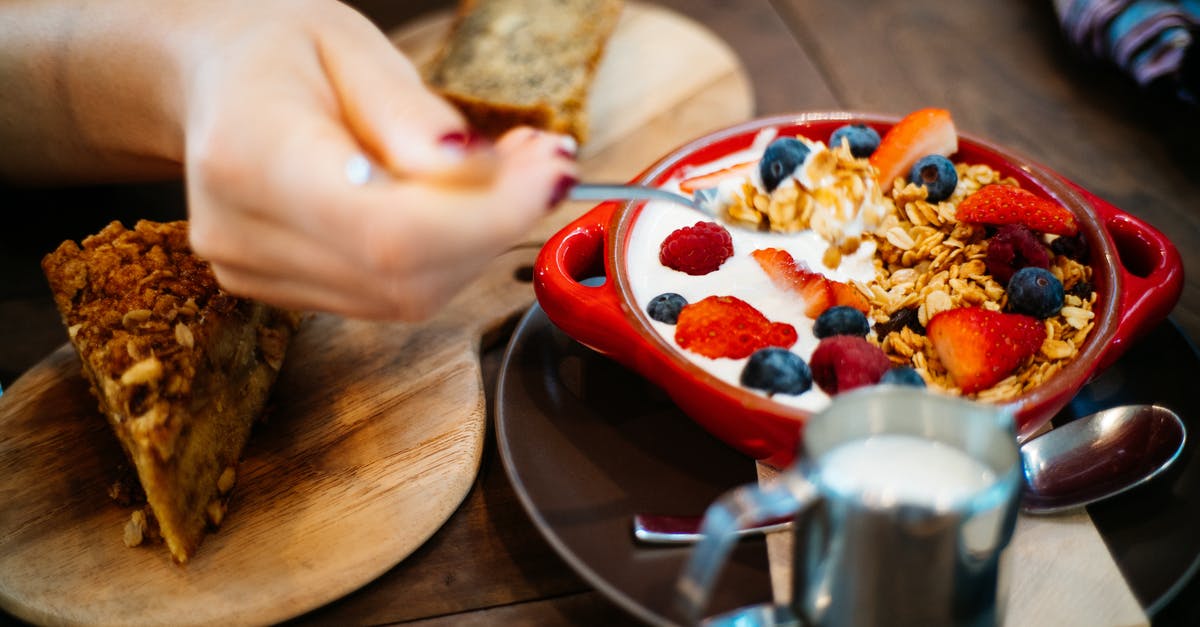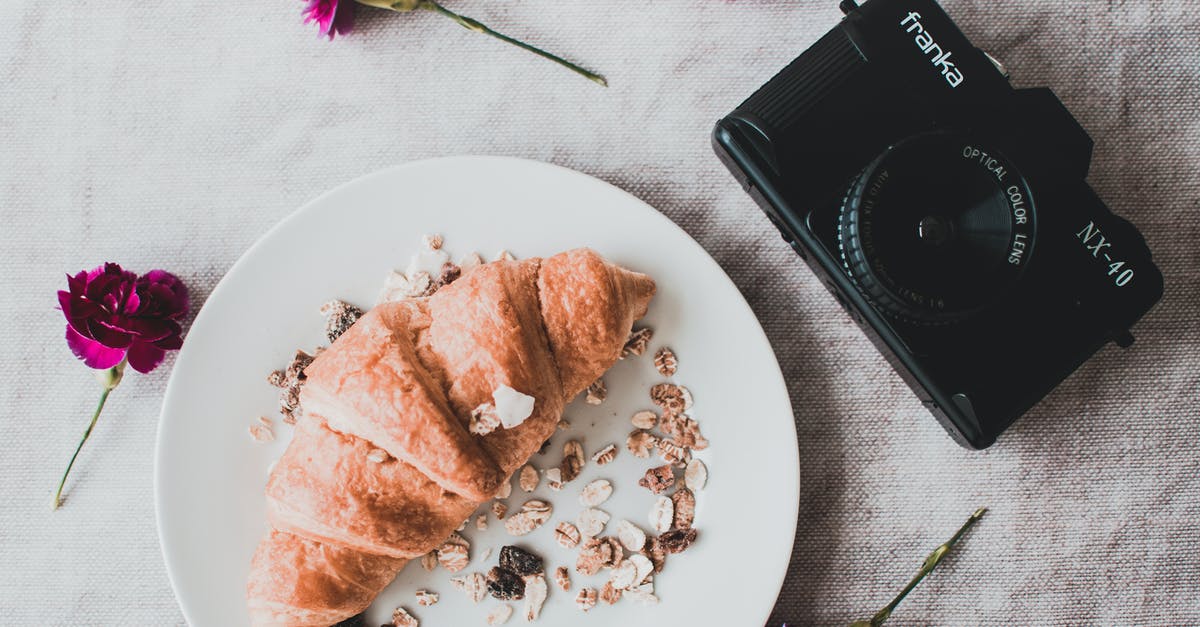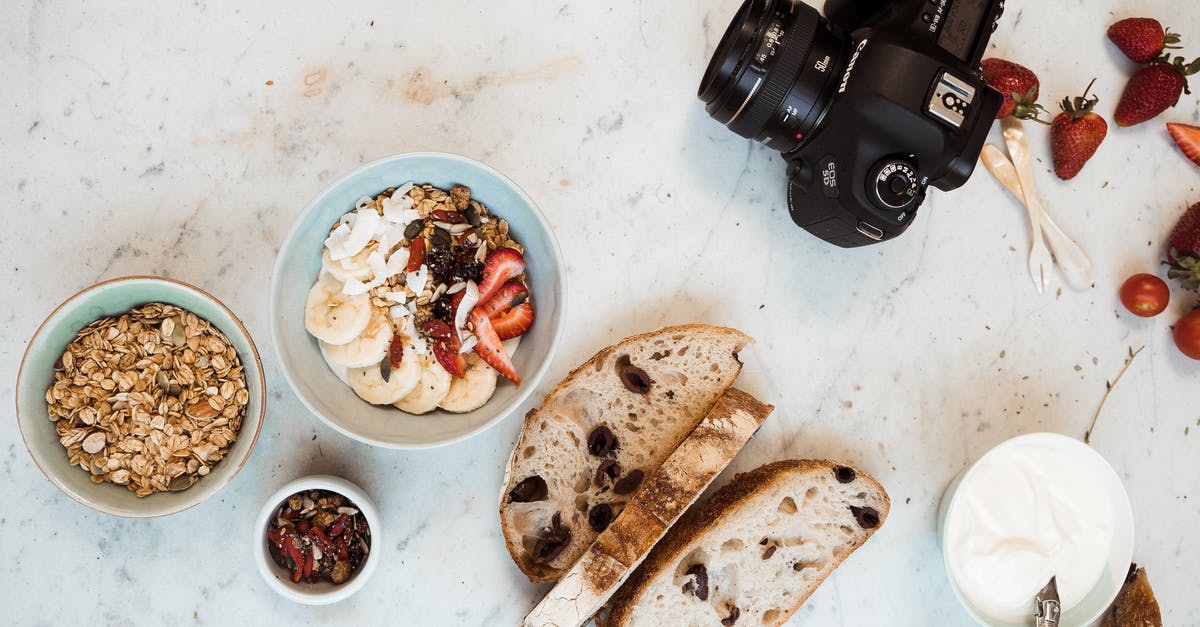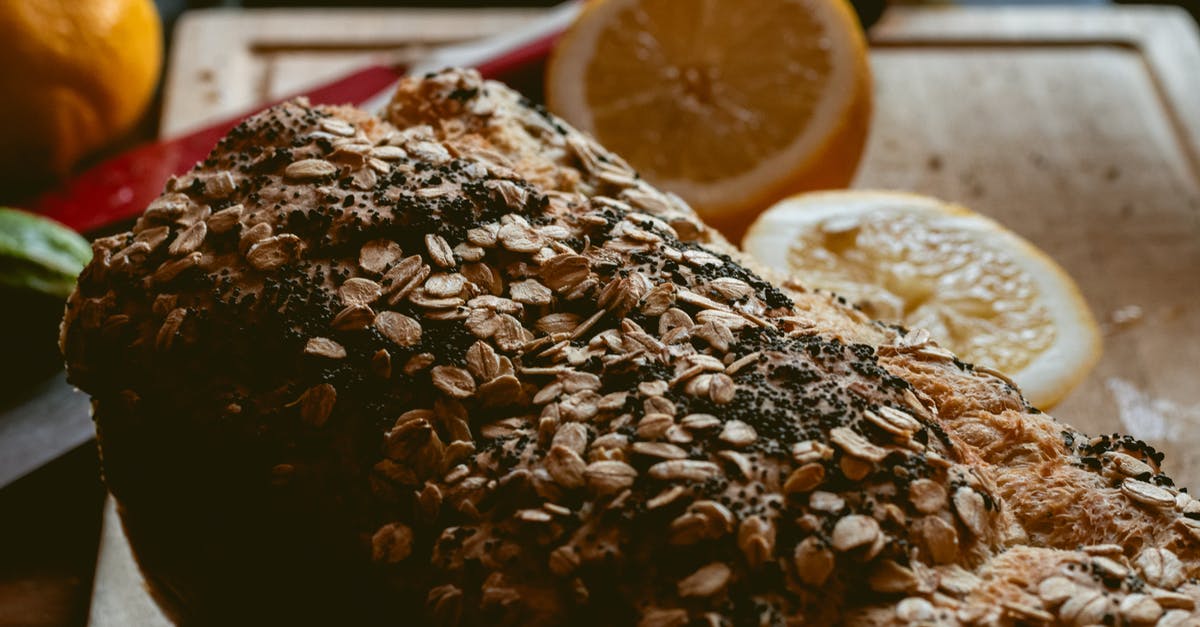Bread: Hydration change for making Wholewheat bread with oats

I make 100% whole wheat bread with 80% hydration. I want to experiment by replacing some whole wheat with oats. How should I change the hydration level?
I replaced 50% whole wheat with oats and made hydration to 100% as oats absorb more water, and the bread was fine!
Next I tried to replace 80% whole wheat with oats and made hydration to 140%, and the bread was quite gooey (soft and sticky) from inside while the crust was hard!
Any suggestions? I think I should decrease the hydration.
Best Answer
If you try to make a bread exclusively or almost exclusively out of oats, you are missing good gluten formation. Oats are gluten-free(1), so won‘t be able to develop the network that traps the CO2 from your yeast like a wheat bread does and what you made was (slightly sloppily phrased) baked oatmeal. Most bakers will tell you that you need a minimum percentage of wheat (or wheat relative like spelt) for a good bread. That’s not true, as some bread traditions that are based on rye have shown. Oat is not a classic bread grain, though.
Now, it would be too easy to simply say „you can‘t make bread out of oats alone“. It is indeed possible, but you need to use a few tricks along the way - and accept a few differences. I am basing this answer largely on the experiment of one German baker and blogger that I usually trust, so I will be paraphrasing the core findings in this post. He used an oat sourdough, a pre-soak/autolyse step for 1/5th of the oats and a comparatively low amount of yeast (which is probably more of his trademark than essential). Overall, he works with a hydration of 125%, which is lower than your 140% and still ends up with a quite wet crumb, so perhaps that would help you getting closer to your desired target - you were perhaps a bit overzealous when amping up the hydration?
The dough is quite soft and sticky (I don’t think classic kneading would work too well here), and is left to rise in a pan until almost fully proofed, then baked with a standard falling heat from 250°C to 250°C. The high hydration means it needs a significantly longer time to fully bake, aim for over an hour (65-75 minutes) and a core temperature of 98°C.
If you look at the photos, you will notice that the bread doesn’t have the light structure of a wheat bred, but is indeed still rather wet.
(1) Not going into the finer details of food chemistry and all that.
Pictures about "Bread: Hydration change for making Wholewheat bread with oats"



What is the best hydration for whole wheat bread?
Most commercial bakers use at least a 90-percent baker's percentage of water\u2013that is, 14.4 ounces to a pound of whole wheat flour.How does oat flour affect bread?
Oat flour is a gluten-free form of whole grain flour made from whole oats that have been ground into a powder. Oat flour gives baked goods more flavor than regular all purpose flour, though it also gives them a chewier and crumblier texture.Can you put oats in bread dough?
Dampen your fingers with a tiny bit of water and then lightly press on the surface of the bread to smooth out the dough. If desired, sprinkle about 1 tbsp of rolled oats across surface and gently press the oats slightly into the surface of the bread so that they stick when baking.Does whole wheat flour need more hydration?
Hydration Changes When Using Whole Wheat FlourWhen using whole wheat flour it is necessary to use more water in your dough compared to using only white flour. This is because the germ and bran that are present in whole wheat flour can absorb more liquid than the endosperm.Healthy Oat Whole Wheat Sandwich Bread Recipe/vegan bread
More answers regarding bread: Hydration change for making Wholewheat bread with oats
Answer 2
Stephie's comment shows the real issue: oats do not have gluten (strictly speaking, they lack the proteins gliadin and glutenin that react in the presence of water to form gluten), so when you swapped out 80% whole wheat for oats, there was almost nothing to give the loaf structure. Basically you made baked porridge with a bread crust.
Another way to get an oaty taste, without affecting the structure of the loaf, is to roll the dough in oats before baking. An egg or milk wash will help them stick.
Answer 3
I find Stephie's link fascinating, but also very much a "kids don't try this at home" thing. For me, it is only something that a hardcore baker enthusiast would do - somebody who has been there, seen it all, is bored by the usual ways of baking, and wants to push the envelope, challenge himself by trying to work with very difficult constraints, and is not deterred by the amount of effort needed or by the expectation of modest results at best.
If you are not that person, I would suggest that you make it easy on yourself. If you want to use such a high amount of alternative flours, just add gluten until you have matched the percentage of bread flour or AP flour, whichever you prefer. This will give you a nice, well-behaved dough that bakes up nicely. As for the hydration, don't change anything against the original recipe at first. Replacing the gluten is a substitution after all, and you are increasing your chance of failure (and reducing your chance of tracing back the reason) if you start doing many major changes to the recipe at once. Also, you are already starting with a very high hydration, so even if it turns out that the oat flour likes more hydration than the wheat flour, you should still be safely in the good range with the original recipe. Only after you have made it 2-3 times and seen that it shows signs of being underhydrated, start changing the recipe by adding more water incrementally.
Sources: Stack Exchange - This article follows the attribution requirements of Stack Exchange and is licensed under CC BY-SA 3.0.
Images: Flo Dahm, Lisa Fotios, Wendy Wei, Bartosz Bartkowiak
